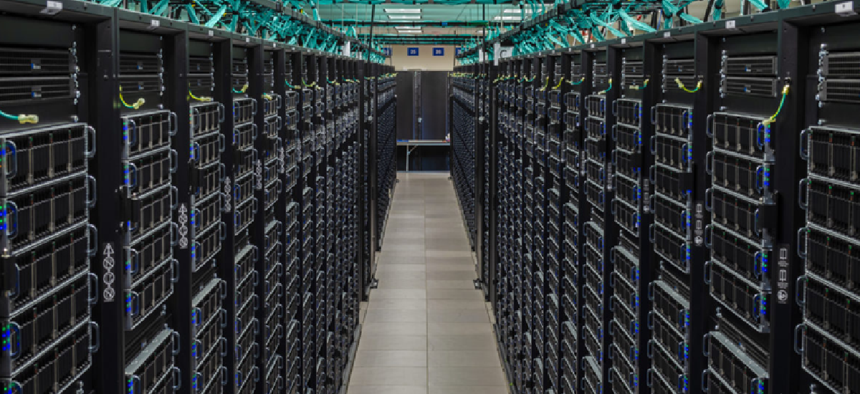Fastest academic supercomputer powers up


Connecting state and local government leaders
Frontera -- the fifth-most powerful supercomputer in the world and the fastest at any U.S. university -- made its official debut Sept. 3 at the Texas Advanced Computing Center at the University of Texas at Austin.
Frontera -- the fifth-most powerful supercomputer in the world and the fastest at any U.S. university -- made its official debut Sept. 3 at the Texas Advanced Computing Center (TACC) at the University of Texas at Austin.
Since 2006, TACC has built and operated three supercomputers that debuted in the Top 10 most powerful systems in the world: Ranger (2008), Stampede1 (2012) and Stampede2 (2017), as well as three other systems that debuted in the Top 25, the university said.
"Scientific challenges demand computing and data at the largest and most complex scales possible. That's what Frontera is all about," said Jim Kurose, assistant director for Computer and Information Science and Engineering at the National Science Foundation. "Frontera's leadership-class computing capability will support the most computationally challenging science applications that U.S. scientists are working on today."
First announced in August 2018 and funded with a $60 million investment from NSF, Frontera has been supporting science applications since June and has already enabled more than three dozen teams to conduct research on a range of topics from black hole physics to climate modeling to drug design, employing "simulation, data analysis and artificial intelligence at a scale not previously possible," NSF officials said.
Olexandr Isayev, a chemist from the University of North Carolina, used Frontera to run more than 3 million atomic force field calculations in less than 24 hours as part of an effort to train an AI system that can predict the likely characteristics of new drug compounds and identify compounds with the ability to target specific cells. Other researchers have used it to study the dynamics of organic photovoltaic materials and to simulate the merger of neutron stars.
Frontera has two computing subsystems, a primary computing system focused on double-precision performance and a second subsystem focused on single-precision streaming-memory computing. The system has multiple storage systems, interfaces to cloud and archive systems and a set of application nodes for hosting virtual servers.
Frontera combines Dell EMC PowerEdge servers with 8,008 compute nodes, each containing two second-generation Intel Xeon scalable processors. The system includes nearly half a million cores, and is connected by a 200 gigbit/sec HDR Mellanox InfiniBand high-speed network. The high-performance machine also features flash storage and several types of liquid cooling and taps wind and solar energy sources for about one-third, of its needs, TACC officials said.
Up to 80% of Fronter's available hours will be made available to researchers through the NSF Petascale Computing Resource Allocation program, TACC officials said. Projects will be selected through a competitive process, and researchers must show they require a Frontera-scale computer to solve their problems.
In the coming months, TACC will work with Microsoft, Google and Amazon to provide long-term storage.





